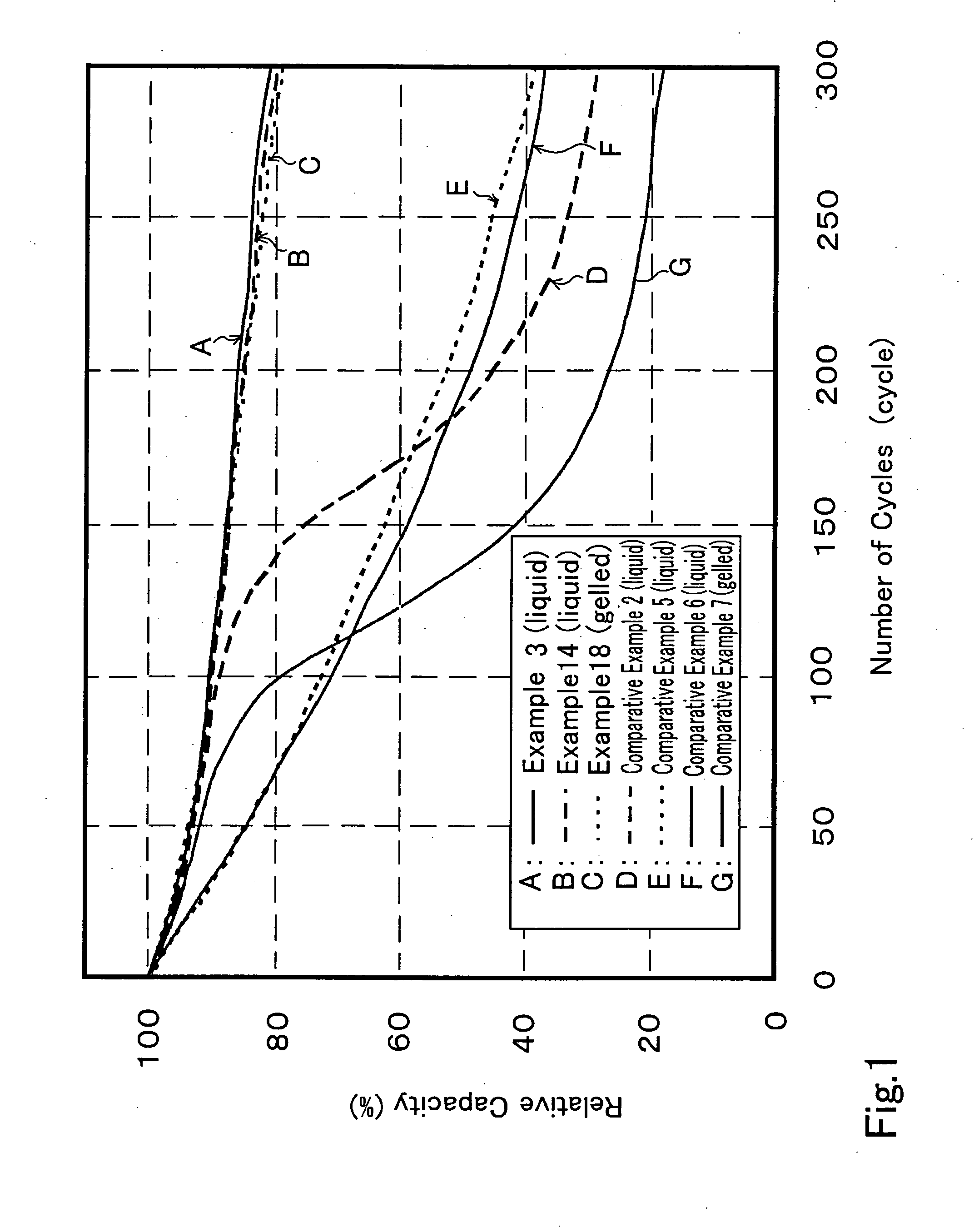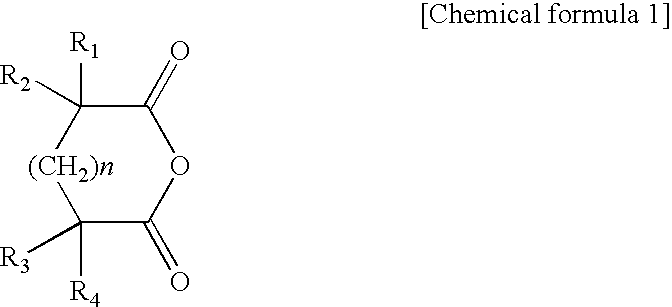Non-aqueous solvent secondary battery
a secondary battery and non-aqueous solvent technology, applied in the direction of non-aqueous electrolyte cells, cell components, electrochemical generators, etc., can solve the problems of pc or bc being more rapidly decomposed, the battery swollen, and the battery capacity of the battery reducing during charging
- Summary
- Abstract
- Description
- Claims
- Application Information
AI Technical Summary
Benefits of technology
Problems solved by technology
Method used
Image
Examples
examples 1 to 20
, COMPARATIVE EXAMPLES 1 TO 7
Initially, by using the liquid non-aqueous solvent electrolyte, eight (8) types of non-aqueous solvent secondary batteries were prepared by using tert-amylbenzene as the aromatic compound containing the electron donating group while adopting different kinds of cyclic acid anhydride, to serve as the non-aqueous solvent secondary batteries referred to as Examples 1 to 8.
In the same manner, nine (9) types of non-aqueous solvent secondary batteries were prepared by using succinic acid anhydride as the cyclic acid anhydride while modifying the kind of aromatic compound containing the electron donating group, to serve as the non-aqueous solvent secondary batteries referred to as Examples 9 to 17.
Further, by using the gelled non-aqueous solvent electrolytes, three (3) types of non-aqueous solvent secondary batteries were prepared by using succinic acid anhydride as the cyclic acid anhydride while changing the kind of aromatic compound containing the electr...
example 21 to example 27
In Examples 21 to 25, non-aqueous solvent secondary batteries were prepared in the manner similar to the method of preparing the non-aqueous electrolytic solution secondary battery of Example 3, by adding succinic acid anhydride as the cyclic acid anhydride by 1.5 mass % relative to the entire mass of the non-aqueous solvent electrolyte, while modifying the amount of tert-amylbenzene as the aromatic compound containing the electron donating group from 0.1 to 3.0 mass % relative to the entire mass of the non-aqueous solvent electrolyte. The method of measuring the initial discharge capacity, the residual capacity after 300 cycles at 60° C. and the amount of gas evolved after 300 cycles at 60° C. of Examples 1 to 20 was adopted for measuring the same characteristics of the batteries of Examples 21 and 22. The results are collectively shown together with the results obtained for Example 3 in Table 2.
Further, non-aqueous solvent secondary batteries of Examples 26 and 27 were prepared...
PUM
| Property | Measurement | Unit |
|---|---|---|
| chemical | aaaaa | aaaaa |
| mass | aaaaa | aaaaa |
| mass ratio | aaaaa | aaaaa |
Abstract
Description
Claims
Application Information
 Login to View More
Login to View More - R&D
- Intellectual Property
- Life Sciences
- Materials
- Tech Scout
- Unparalleled Data Quality
- Higher Quality Content
- 60% Fewer Hallucinations
Browse by: Latest US Patents, China's latest patents, Technical Efficacy Thesaurus, Application Domain, Technology Topic, Popular Technical Reports.
© 2025 PatSnap. All rights reserved.Legal|Privacy policy|Modern Slavery Act Transparency Statement|Sitemap|About US| Contact US: help@patsnap.com



